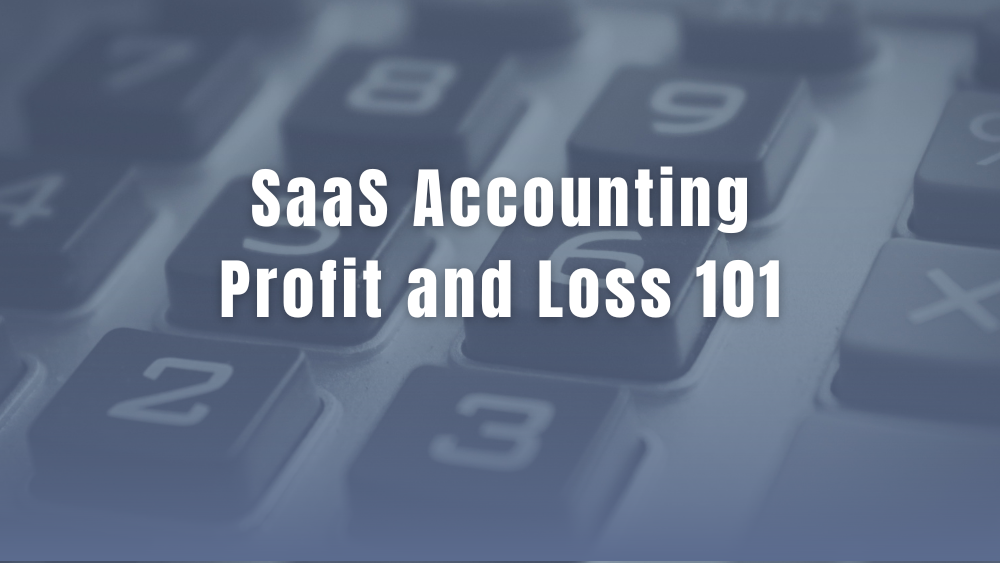SaaS Accounting for Startups: Profit and Loss 101

SaaS Accounting for Startups: Profit and Loss 101
Understanding SaaS accounting for startups is crucial to your success. So how do you manage this while running your new business? It starts with a standard B2B SaaS cost structure financial statement.
A Standard B2B SaaS cost structure financial statement includes:
- Bookings vs. Recognized Revenue
- Gross Margin by Income Type
- Departmental Expense
- Net Operating Income
If you’re having an accounting system set up by a tax CPA, you need to show them this breakdown and say, “I want my accounting system to produce this kind of a report.”

This format is not just something that we made up. This accounting statement is straight out of Pacific Crest, Key Bank Research and is what the industry is expecting.
If you take a look at some of the publicly traded SaaS companies, you’re going to see a very similar income statement. This statement gives you all the information you need to measure yourself as to how well you’re doing as a company.
Bookings vs Recognized Revenue
This financial statement starts off with your bookings vs recognized revenue. We’ve all heard about GAAP revenue. When it comes to SaaS, GAAP revenue is something that’s near and dear to the CPA’s hearts. Most people don’t really pay much at attention to it. Instead, they’re looking at the invoice volume that’s coming through. But the best practice for SaaS accounting is to have an income statement that shows both bookings and recognized revenue.
Show your gross bookings, whether it’s recurring software, if you’re charging services, or non-recurring software, such as set up fees. Then below that you have a single line item that says, “Here’s what we need to adjust it for GAAP. And here’s what our book income is, or our GAAP income.”
Gross Margin by Income Type
This next item is one that’s really important for Saas Startups, gross margin by income type. If you have multiple revenue sources, you need to know what your gross margin is by revenue source.
So first there is production. That’s the actual delivery of your system to your customers. This could be your AWS hosting and things like that.
Then there is delivery. What does it cost your folks to set a customer up and get them up and running?
And then there is retention and support that comes afterwards. What does it take to keep customers happy? And what does it take to get them to renew? You really want to focus on those three buckets in particular.
Departmental Expenses
Departmental expenses for your SaaS startup company include:
- Major research and development (R&D)
- Sales and Marketing
- General and Administrative (G&A)
You need your R&D broken out, so you can claim that tax credit correctly. You need your sales and marketing because you have to have a Customer Acquisition Cost (CAC) and you have to have a whole bunch of other metrics that are based on sales activity.
Then you need to keep a real close eye on G&A expenses and make sure that it’s not taking a big drag on your bottom line, getting to that net operating income.
QuickBooks is a great tool to track your expenses because if something’s broken, you can go in and change it. It’s very easy and forgiving system, especially for startup SaaS companies.
Anthony Nitsos, Founder and Fractional CFO
Anthony Nitsos elevates your financial strategy to meet challenges and drive your company value. Working with pre-seed to Series B stage SaaS startups, he ensures that founders have reliable metrics and a solid understanding of the true economics of their business to maximize valuation. He optimizes financial operations, sales operations, human resources operations, and risk management systems. He’s worked with various startups, including two unicorn exits.

